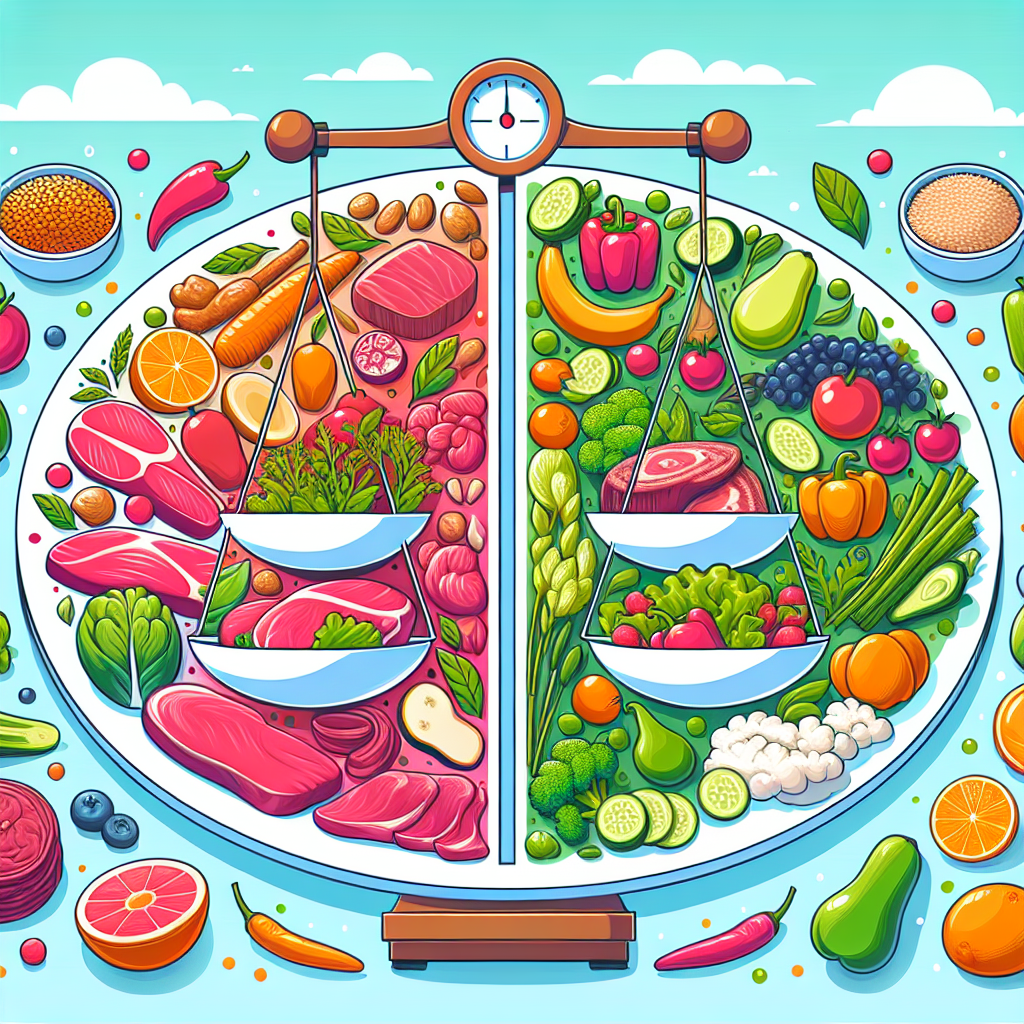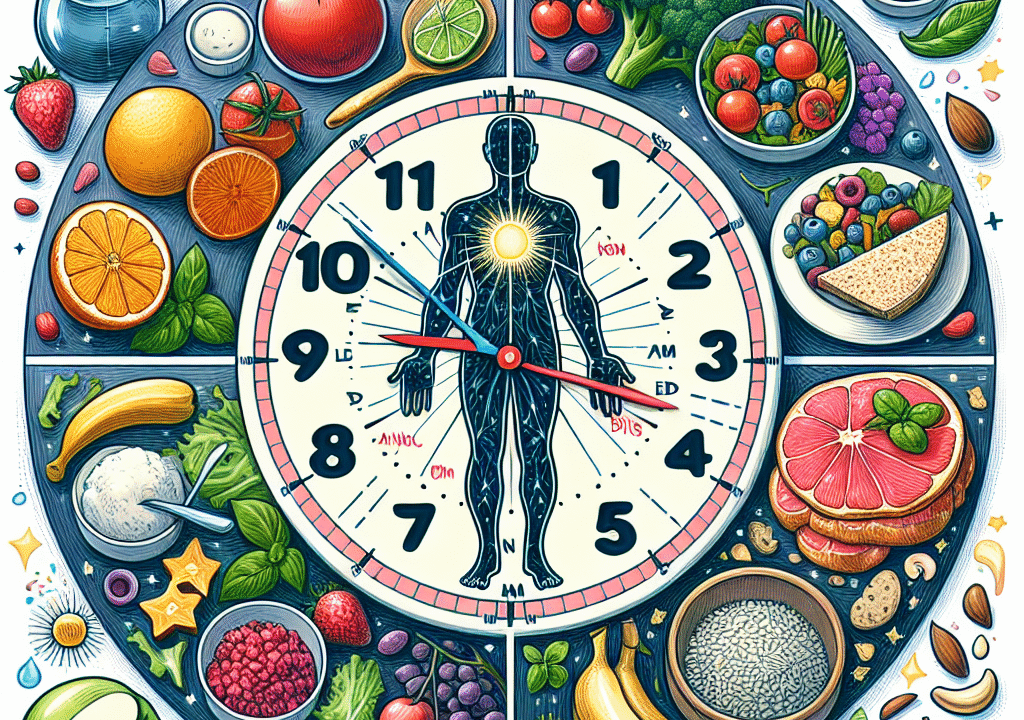
Carnivore to Plant-Based: The Science-Backed Benefits of Cycling Between Extreme Diets
Exploring Opposite Diets for Better Health
In the ever-evolving world of nutrition, extreme diets often spark strong opinions. A carnivore diet—focused on meat, eggs, and animal products—sits in stark contrast to a high-fiber plant-based diet filled with vegetables, legumes, and whole grains.
But what if the smartest move isn’t choosing one over the other? What if true wellness is found by intentionally cycling between both styles?
Welcome to the concept of diet cycling between extremes—a strategic rotation between plant-based and carnivore eating patterns. This method may offer proven benefits for your metabolism, hormones, digestion, and overall health.
Dr. Gabrielle Lyon, a functional medicine expert, explains, “Nutritional shifts can act like stressors that actually improve resilience—just like exercise stresses a muscle to make it stronger.”
What Is Diet Cycling?
So, what exactly is structured diet cycling between plant-based and carnivore diets?
It’s a planned series of dietary phases, where you alternate between a zero-carb, meat-heavy approach and a nutrient-rich, plant-forward plan. Think of it like cross-training for your body—designed to boost metabolic performance and keep your meals exciting.
For example, you could follow a carnivore approach for three weeks, focusing on food like beef, liver, eggs, and bone broth. Then, for the next three weeks, switch to a colorful whole-food plant-based diet, including lentils, leafy greens, quinoa, and sweet potatoes.
Important: Don’t transition too abruptly. Your body needs time to adjust. Shifting from all meat to all fiber can upset digestion. A gradual transition over three to five days can help avoid bloating and stomach discomfort.
Why Rotate Between Carnivore and Plant-Based Diets?
You might wonder, isn’t swinging from steak to salad extreme? Surprisingly, it’s this big contrast that delivers powerful results. Each phase supports different systems in your body. Combining the two offers greater benefits than sticking to just one diet over time.
Let’s break down five big reasons to try this cyclical eating strategy.
1. Boosted Metabolic Flexibility
One major benefit is enhanced metabolic flexibility—your body’s ability to switch between burning fat and carbohydrates.
A study published in The Journal of Physiology found that those with higher metabolic flexibility enjoy more stable energy and a lower risk of obesity and metabolic diseases. During the carnivore phase, your body enters ketosis and burns fat for energy. The plant-based phase reintroduces complex carbs like quinoa and beans, allowing you to use glucose more efficiently again.
This rotation can help:
– Stabilize blood sugar
– Improve insulin sensitivity
– Support long-term weight management
Dr. Ben Bikman, author of Why We Get Sick, emphasizes, “Metabolic flexibility is a key predictor of long-term health and resilience.”
2. Improved Gut Microbiome Diversity
Your gut is home to over 100 trillion microbes, which are influenced by the food you eat.
The carnivore diet lacks fiber and may reduce gut bacteria diversity. In contrast, the plant-based diet feeds helpful microbes that support digestion, improve mood, enhance immunity, and reduce inflammation.
Research shows that people consuming more than 30 varieties of plant foods per week have higher gut diversity.
When you cycle:
– The carnivore phase can calm inflammation or microbial overgrowth
– The plant-based phase replenishes beneficial bacteria with prebiotics and polyphenols
Together, this pattern may promote a healthier, more balanced gut microbiome than either diet alone.
3. Balanced Hormone Levels
Proper nutrition is essential for hormone health. Animal-based diets provide key nutrients such as cholesterol, zinc, and fat-soluble vitamins—important for testosterone, estrogen, and thyroid function. However, long-term carnivore diets may raise stress hormones like cortisol or slow down thyroid function in some individuals.
Plant-based diets supply fiber and compounds found in cruciferous vegetables like broccoli and Brussels sprouts. These help the body eliminate excess hormones and reduce the risk of hormonal imbalances.
By cycling, you may:
– Support fertility and libido
– Improve adrenal and thyroid function
– Reduce symptoms like PMS and hormonal acne
Dr. Sara Gottfried, a hormone specialist, notes, “Diet acts as a hormonal switchboard—every bite is a signal.”
4. Increased Motivation and Food Freedom
Sticking to rigid diet rules can lead to burnout. About 45% of Americans try to lose weight each year, yet many give up due to boredom or frustration.
With diet cycling, you can stay mentally fresh. Switching diets allows you to experience different physical and emotional states:
– Increased discipline and satiety on carnivore weeks
– A sense of lightness, energy, and creativity during plant-based weeks
Tracking how your body responds improves awareness and helps you build a more intuitive approach to eating. Ultimately, this promotes a healthy relationship with food based on flexibility and self-knowledge—not guilt or rigidity.
5. Comprehensive Nutrient Rebalancing
No single diet is nutritionally complete. The carnivore plan offers bioavailable sources of B12, iron, taurine, creatine, and zinc—nutrients often missing in vegan diets. In contrast, plant-based eating provides vitamin C, magnesium, folate, and protective antioxidants.
By rotating, you’re more likely to meet your body’s needs—filling nutritional gaps and preventing the deficiencies associated with following just one strict diet style for too long.
For example:
– Low in energy or iron? Add a carnivore phase.
– Battling inflammation or need more fiber? Go plant-based.
This rotation gives your body a broader range of nutrients across time.
Getting Started with Diet Cycling
Thinking of trying a plant-based and carnivore diet rotation? Begin with a simple plan:
1. Choose a timeframe. Start with two to four weeks per phase. A common pattern is three weeks on carnivore, then three on plant-based.
2. Transition gradually. Avoid jumping from one extreme to another overnight. Allow your digestive system to adapt over three to five days.
3. Track your results. Use a notebook or health tracking app to monitor changes in energy, sleep, mood, digestion, and body composition.
4. Supplement wisely. During carnivore phases, add magnesium and vitamin C. For plant-based weeks, include vitamin B12, omega-3s, and possibly iron.
Don’t neglect hydration, especially during zero-carb weeks where water loss increases. Consider electrolyte support. And always consult a healthcare provider if you’re managing medications or health conditions. Online resources like eDrugstore.com offer access to licensed professionals who can help create personalized supplement and medication plans.
Final Thoughts: Adapt Like Our Ancestors
Human biology thrives on flexibility. Our ancestors’ eating habits changed with the seasons—some days rich in animal protein, others almost entirely plant-based. Adaptation was essential for survival.
By embracing this same principle and practicing structured diet cycling, you may unlock:
– More consistent energy levels
– Better blood sugar control
– Stronger gut and hormone function
– A confident, intuitive relationship with food
Whether you’re a wellness enthusiast, a biohacker, or someone curious about new approaches to health, **experimenting with diet cycling** could be the strategy that revitalizes your wellness journey.
Ready to Start?
Team up with a healthcare provider or nutrition professional to build a plan tailored to your goals. Your body is built to evolve—and now your diet can too.
References
1. Goodpaster et al., “Skeletal Muscle Lipid Content and Insulin Resistance: Evidence for a Paradox in Endurance-Trained Athletes,” Journal of Clinical Endocrinology & Metabolism, 2001
2. McDonald, D. et al., “American Gut: an Open Platform for Citizen Science Microbiome Research,” mSystems, 2018
3. CDC. “Attempts to Lose Weight Among Adults in the United States, 2013–2016.” National Center for Health Statistics
This article is ready for publishing on your blog or website. Let us know if you’d like to repurpose it into an email series, detailed guide, or downloadable PDF.


